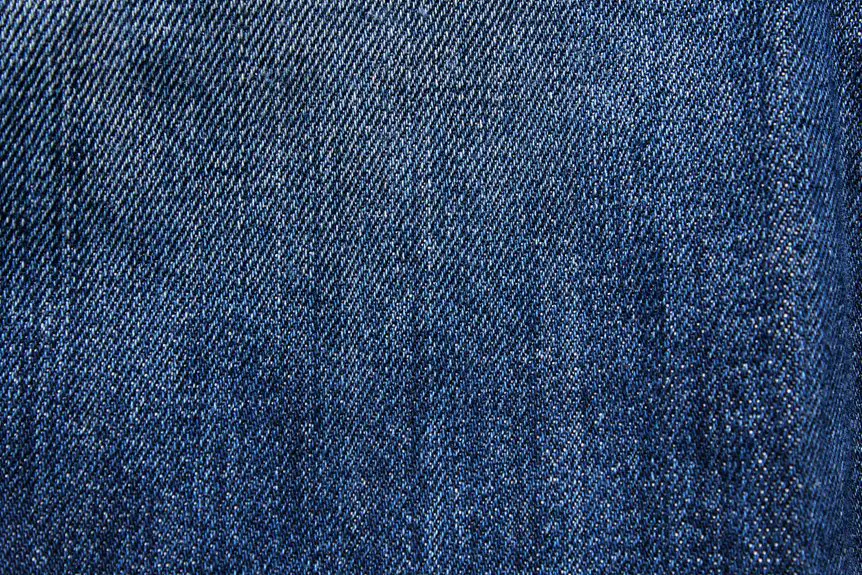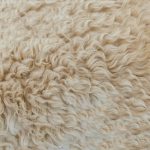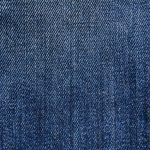If you’re deciding between polyamide and microfiber, know that polyamide offers greater strength, durability, and moisture-wicking ideal for activewear and heavy-use items. Microfiber feels softer and more lightweight, making it perfect for comfort-driven clothing and home textiles like bedding or cleaning cloths. Both fabrics require gentle care to maintain performance and have environmental considerations due to microplastics and production impact. To understand how they differ in structure, care, and uses, keep exploring more details.
Table of Contents
Key Takeaways
- Polyamide is stronger and more durable, ideal for heavy-use and industrial applications, while microfiber is softer and better suited for home textiles and cleaning.
- Microfiber fibers are finer than polyamide, offering a plush feel and greater breathability in fabrics.
- Both materials wick moisture, but polyamide excels at keeping skin dry during active use.
- Care for both requires gentle washing in cold water and low-heat drying to maintain performance and elasticity.
- Environmental concerns include microplastic pollution from microfiber and energy-intensive polyamide production, though both can be recycled for sustainability.
What Is Polyamide?
Polyamide is a type of synthetic fiber commonly used in textiles and manufacturing. When you choose polyamide, you’re opting for a material known for its strength, elasticity, and resistance to abrasion.
It’s often found in clothing, especially activewear, because it stretches without losing shape and dries quickly. You’ll also see polyamide in industrial applications due to its durability and resistance to chemicals.
This fiber is lightweight and smooth, which makes it comfortable against your skin. Plus, polyamide resists wrinkles and holds dyes well, so colors stay vibrant longer.
While it’s synthetic, polyamide’s properties often mimic natural fibers like silk or wool, giving you versatility in both function and fashion. Understanding polyamide helps you appreciate its role in everyday products you use.
What Is Microfiber?
Microfiber stands out as a finely woven synthetic fiber that offers exceptional softness and durability. When you use microfiber, you’ll notice its lightweight feel and impressive strength despite its thin strands.
It’s made from ultra-fine fibers, often a blend of polyester and polyamide, which gives it excellent moisture-wicking and quick-drying properties. You’ll find microfiber in everything from cleaning cloths to athletic wear because it traps dirt and absorbs liquids efficiently.
Plus, it resists wrinkles and holds its shape well, making your garments look fresh longer. If you want a fabric that’s easy to care for, soft against your skin, and built to last, microfiber is a smart choice.
It combines comfort and performance in a way that suits many everyday needs.
Key Differences in Fiber Structure
You’ll notice that polyamide and microfiber differ markedly in their fiber composition and structure.
Understanding these differences helps you see why each performs uniquely in various applications.
Let’s explore how their structural characteristics set them apart.
Fiber Composition Differences
Although both materials fall under synthetic fibers, their structural differences greatly impact their performance and use.
Polyamide, commonly known as nylon, is made from long-chain polymers of amides which give it strength and elasticity. You’ll find it composed of tightly packed molecular chains, making it durable and resistant to wear.
Microfiber, on the other hand, refers to fibers finer than one denier, often made from polyamide or polyester blends. Because microfibers are much thinner, they offer a softer feel and greater surface area, enhancing moisture absorption and dirt trapping.
When you choose between the two, remember polyamide focuses on toughness and resilience, while microfiber emphasizes fine texture and enhanced cleaning ability due to its unique, ultra-fine composition.
Structural Characteristics Comparison
The core structural differences between polyamide and microfiber lie in their fiber thickness and arrangement. When you compare the two, polyamide fibers are generally thicker and more robust, while microfiber consists of ultra-fine strands that are less than one denier in diameter. This difference impacts texture, durability, and performance.
To help you understand better, here are key distinctions:
- Fiber Thickness: Polyamide fibers are thicker, giving them strength; microfibers are ultrafine, enhancing softness and flexibility.
- Weave Density: Microfibers are densely woven, making fabrics lighter and more breathable compared to polyamide.
- Surface Texture: Polyamide feels smoother and more uniform; microfiber has a plush feel due to its fine strands.
Knowing these differences helps you choose the right material based on your needs.
Durability and Strength Comparison
When choosing between polyamide and microfiber, you’ll want to contemplate how each material holds up over time.
Polyamide is known for its exceptional strength and resistance to abrasion, making it highly durable for daily wear and heavy use. It resists stretching and tearing, so your items retain their shape longer.
Polyamide offers exceptional strength and abrasion resistance, ensuring durability and shape retention through daily wear.
Microfiber, while also strong, tends to be softer and more flexible but may wear down faster under intense friction. It excels in providing comfort but mightn’t withstand rough conditions as well as polyamide.
If you need something tough that lasts through rigorous use, polyamide is a solid choice. However, if you prefer a balance of durability with a softer touch, microfiber could suit your needs better.
Moisture Wicking and Breathability
Durability matters, but how a fabric handles moisture and airflow can make just as big a difference in comfort.
When choosing between polyamide and microfiber, you’ll want to take into account how each fabric manages sweat and breathability throughout your day.
Polyamide excels at moisture wicking, pulling sweat away from your skin quickly to keep you dry.
Microfiber also offers decent moisture management but focuses more on softness and lightweight feel.
Here’s what to keep in mind:
- Polyamide’s quick-dry ability keeps you comfortable during intense activities.
- Microfiber provides better breathability, allowing air to circulate and reduce overheating.
- Both fabrics help prevent clamminess, but their moisture management varies based on weave and finish.
Understanding these differences guarantees you pick the fabric that best suits your comfort needs.
Care and Maintenance Tips
Anyone who wants their polyamide or microfiber garments to last should follow specific care guidelines.
Proper care is essential to extend the life of your polyamide and microfiber garments.
You should wash these fabrics in cold or lukewarm water to prevent damage and preserve elasticity. Use a gentle detergent and avoid bleach or fabric softeners, as they can break down fibers and reduce performance.
When drying, skip the high heat; air drying is best to maintain the fabric’s structure. If you must use a dryer, select a low heat setting.
Avoid ironing, since high temperatures can melt synthetic fibers. Also, wash polyamide and microfiber items separately from rough fabrics like denim to prevent pilling.
Common Uses and Applications
You’ll find polyamide and microfiber in everything from apparel and activewear to home textiles like upholstery and curtains.
Both materials also play key roles in industrial and technical applications due to their durability and performance.
Let’s explore where each fiber shines the most.
Apparel and Activewear
Although both polyamide and microfiber fabrics are popular choices in apparel and activewear, they serve different purposes based on their unique properties.
When you pick polyamide, you get durability and excellent moisture-wicking, making it ideal for intense workouts.
Microfiber, on the other hand, offers a softer feel and superior breathability, perfect for casual wear or layering.
Consider these common uses:
- Polyamide suits compression garments and performance gear that demand strength and stretch.
- Microfiber works well in lightweight tops, leggings, and sports bras where comfort is key.
- Both fabrics are used in socks and base layers for their quick-drying capabilities.
Knowing these differences helps you choose the right fabric for your activity and comfort needs.
Home Textiles Usage
When selecting fabrics for home textiles, understanding the distinct qualities of polyamide and microfiber can improve your choices.
Polyamide, known for its durability and resistance to abrasion, suits items like upholstery and heavy-use cushions. It holds up well against wear and tear, making it ideal for everyday living spaces.
Microfiber, on the other hand, excels in softness and stain resistance. You’ll find it perfect for bedding, curtains, and cleaning cloths where comfort and easy maintenance matter most. Its fine fibers trap dust and allergens, benefiting allergy sufferers.
Industrial and Technical Uses
Beyond home textiles, polyamide and microfiber find valuable roles in various industrial and technical fields. When you’re choosing between the two, consider their strengths in specific applications.
Polyamide’s durability and resistance to abrasion make it ideal for heavy-duty uses. Meanwhile, microfiber’s fine fibers excel in precision cleaning and filtration tasks.
Here are some common industrial and technical uses you should know:
- Polyamide is widely used in automotive parts, protective gear, and conveyor belts due to its toughness.
- Microfiber suits medical textiles and electronic cleaning cloths, where gentle but effective performance matters.
- Both materials appear in air and water filtration systems, with microfiber providing superior filtration efficiency.
Understanding these applications helps you select the right material for your industrial needs.
Environmental Impact and Sustainability
Since you care about the planet, understanding the environmental impact and sustainability of polyamide and microfiber is essential.
Polyamide, a synthetic fiber derived from petroleum, consumes significant energy and emits greenhouse gases during production. Its non-biodegradable nature means it lingers in landfills for decades.
Microfiber, often made from polyester or nylon, shares similar challenges but adds microplastic pollution to water bodies during washing.
However, both materials can be recycled, and innovations are improving their eco-friendliness. Choosing products made from recycled polyamide or microfiber reduces resource use and waste.
Both polyamide and microfiber can be recycled, with innovations enhancing their sustainability and reducing environmental impact.
You can also minimize environmental harm by washing microfiber fabrics in bags designed to catch microfibers.
Ultimately, being mindful about sourcing, usage, and disposal helps you support sustainability while benefiting from these versatile materials.
Frequently Asked Questions
Can Polyamide or Microfiber Cause Skin Allergies?
Imagine your skin as a delicate garden; sometimes, synthetic fibers like polyamide or microfiber can act like unexpected thorns, causing irritation or allergies. You might react differently, so always test fabrics gently against your skin first.
Which Fabric Feels Softer Against the Skin?
You’ll find microfiber feels softer against your skin because its fine fibers create a smooth, plush texture. Polyamide can feel slightly rougher in comparison, so microfiber’s gentle touch makes it more comfortable for sensitive skin.
Are Polyamide and Microfiber Safe for Sensitive Skin?
Wondering if your skin will thank you? Both fabrics are generally safe for sensitive skin, but you’ll want to check for any added chemicals or dyes that might irritate. Always test before full use!
How Do These Fabrics Perform in Extreme Cold?
In extreme cold, these fabrics keep you warm by trapping heat and wicking moisture away. They dry quickly and stay lightweight, so you won’t feel weighed down or chilled, making them great for cold-weather gear.
Do Polyamide and Microfiber Fabrics Retain Odors?
You might notice polyamide tends to hold odors more due to its synthetic nature, while microfiber resists odors better because of its fine fibers. Still, proper washing helps keep both fresh and odor-free over time.
- Does Chiffon Fabric Stink - July 15, 2025
- Does Chiffon Fabric Affect the Economy - July 15, 2025
- Does Cotton Fabric Have a Nap - July 15, 2025







